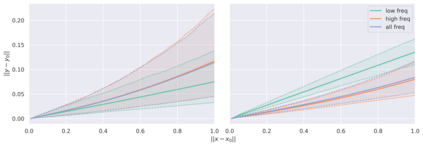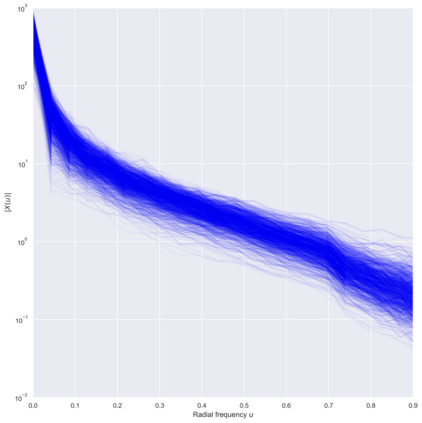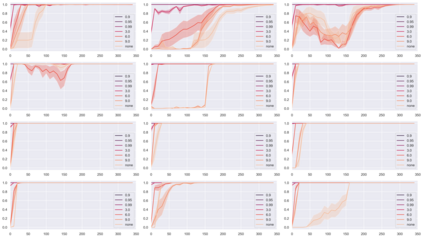ResNets constrained to be bi-Lipschitz, that is, approximately distance preserving, have been a crucial component of recently proposed techniques for deterministic uncertainty quantification in neural models. We show that theoretical justifications for recent regularisation schemes trying to enforce such a constraint suffer from a crucial flaw -- the theoretical link between the regularisation scheme used and bi-Lipschitzness is only valid under conditions which do not hold in practice, rendering existing theory of limited use, despite the strong empirical performance of these models. We provide a theoretical explanation for the effectiveness of these regularisation schemes using a frequency analysis perspective, showing that under mild conditions these schemes will enforce a lower Lipschitz bound on the low-frequency projection of images. We then provide empirical evidence supporting our theoretical claims, and perform further experiments which demonstrate that our broader conclusions appear to hold when some of the mathematical assumptions of our proof are relaxed, corresponding to the setup used in prior work. In addition, we present a simple constructive algorithm to search for counter examples to the distance preservation condition, and discuss possible implications of our theory for future model design.
翻译:ResNet被限制为双利普施维茨,也就是近距离保持,是最近提出的神经模型中确定性不确定性量化技术的关键组成部分。我们表明,最近试图实施这种约束的正规化计划的理论依据存在一个重大缺陷 -- -- 所使用的正规化计划与双利普施维茨之间的理论联系只有在实际无法维持的条件下才有效,尽管这些模型有很强的经验性表现,但现有的有限使用理论却仍然有效。我们用频率分析角度为这些常规化计划的有效性提供了理论解释,表明在温和的条件下,这些计划将在低频图像投影上实施较低的利普施维茨。我们随后提供了经验证据来支持我们的理论主张,并进行进一步实验,表明当我们的证据的一些数学假设在与先前工作中所用的设置相对应时,我们似乎可以得出更为广泛的结论。此外,我们提出了一个简单的简单的建设性算法,以寻找与远程保护条件相对的反例,并讨论我们理论对未来模型设计可能产生的影响。












